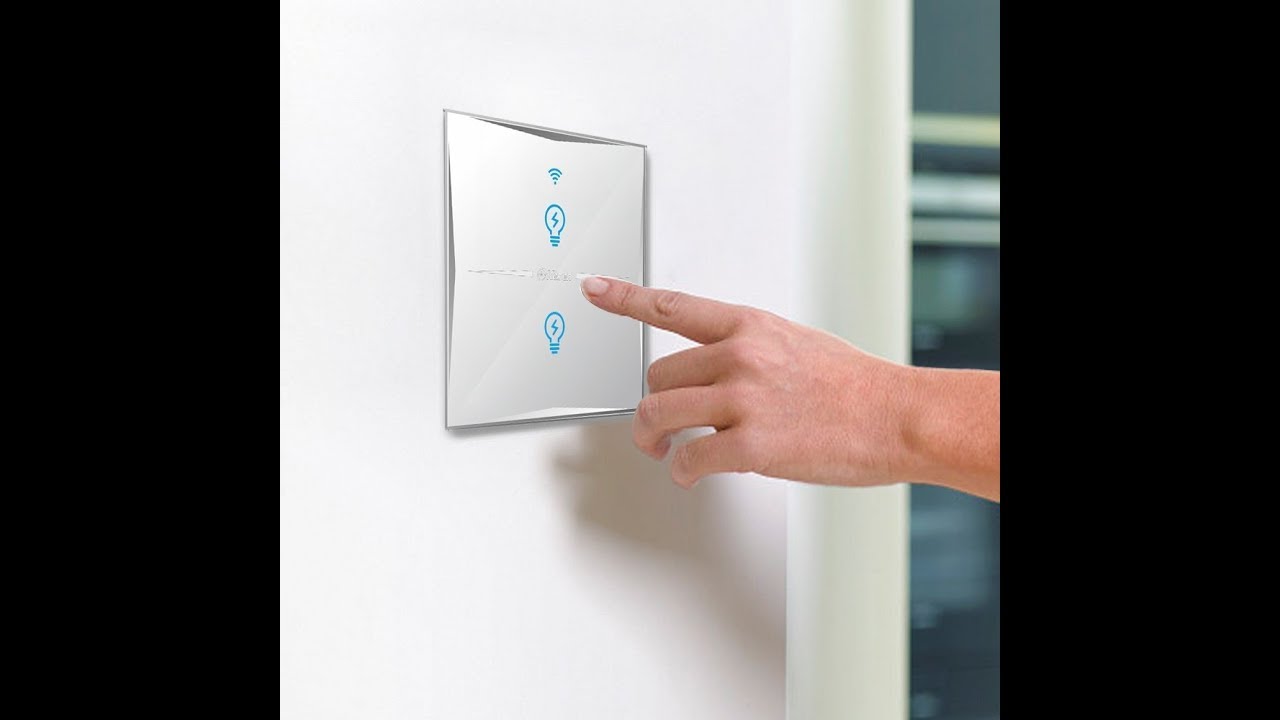Smart Light Switch Market Overview:
The smart light switch market refers to the industry involved in the manufacturing and distribution of intelligent switches that enable remote control and automation of lighting systems. These switches are typically equipped with wireless connectivity and can be controlled through smartphone apps or integrated with smart home automation systems. Here is an overview of the smart light switch market.The Smart Light Switch Market refers to the market for intelligent light switches that can be controlled remotely or through automation platforms.The Smart Lighting Market is expected to reach $39.91 billion by 2029, at a CAGR of 12.2% during the forecast period of 2022–2029.
Here are some platforms commonly associated with the Smart Light Switch Market:
- Wi-Fi: Smart light switches that connect to the Wi-Fi network allow users to control their lights using mobile apps or voice commands through virtual assistants like Amazon Alexa or Google Assistant.
- Zigbee: Zigbee is a wireless communication protocol commonly used in smart home devices. Smart light switches based on Zigbee can be integrated into Zigbee-based smart home ecosystems for centralized control and automation.
- Z-Wave: Z-Wave is another wireless communication protocol used in smart home devices. Smart light switches based on Z-Wave can be integrated into Z-Wave networks for seamless control and automation of lighting.
- Bluetooth: Smart light switches with Bluetooth connectivity allow direct control from a smartphone or tablet without the need for an additional hub or bridge. They typically have limited range and require proximity to the controlling device.
- HomeKit: HomeKit is Apple’s smart home platform that enables control and automation of compatible devices using Siri voice commands or the Apple Home app. Smart light switches compatible with HomeKit can be integrated into the Apple ecosystem.
- Smart Speakers: Some smart light switches can be controlled using smart speakers such as Amazon Echo with Alexa or Google Home with Google Assistant. These switches often use Wi-Fi or other compatible protocols to communicate with the smart speakers.
- Mobile Apps: Many smart light switches have their dedicated mobile apps that allow users to control and automate their lights directly from their smartphones or tablets. These apps often provide additional features such as scheduling, scene creation, and energy monitoring.
- Smart Home Hubs: Smart light switches can be integrated into various smart home hubs or controllers, such as Samsung SmartThings, Hubitat Elevation, or Wink Hub. These hubs act as a centralized control point for managing multiple smart devices, including light switches.
It’s important to note that the compatibility of smart light switches with specific platforms
Market Share and Size: The global smart light switch market was valued at approximately USD 2 billion.
Types of Smart Light Switches:
- Wi-Fi Enabled Switches: These switches connect directly to the home Wi-Fi network, allowing users to control lights remotely through smartphone apps or voice assistants.
- Zigbee or Z-Wave Enabled Switches: These switches operate on wireless protocols like Zigbee or Z-Wave, requiring a central hub for connectivity and control.
- Bluetooth Enabled Switches: These switches connect to smartphones or tablets via Bluetooth technology for control and automation.
Key Growth Factors and Trends:
- Increasing Adoption of Smart Homes: The growing trend of smart homes, where various devices are connected and controlled through a central system, drives the demand for smart light switches as an integral component of home automation.
- Energy Efficiency and Cost Savings: Smart light switches offer features such as dimming controls, scheduling, and occupancy sensing, leading to energy efficiency and reduced electricity bills.
- Convenience and Customization: The ability to control lighting remotely and customize settings according to preferences enhances convenience and creates a personalized lighting experience for users.
- Integration with Voice Assistants: Smart light switches can be integrated with popular voice assistants like Amazon Alexa and Google Assistant, enabling voice control of lighting systems and seamless integration into the smart home ecosystem.
- Advancements in Wireless Technologies: Continual advancements in wireless connectivity technologies, such as Wi-Fi, Zigbee, and Bluetooth, improve the reliability and ease of use of smart light switches, further fuelling market growth.
Key Points for Development and Forecasts:
- Product Innovation and Differentiation: Manufacturers are expected to focus on product innovation, offering advanced features like motion sensing, color control, and compatibility with multiple smart home platforms to differentiate themselves in the market.
- Compatibility with Existing Infrastructure: The development of smart light switches that can retrofit into existing electrical infrastructure without requiring additional wiring or modifications will drive market adoption.
- Expansion of Distribution Channels: The availability of smart light switches through various retail channels, online platforms, and partnerships with home improvement stores will expand market reach and consumer accessibility.
- Integration with Energy Management Systems: Smart light switches are likely to integrate with energy management systems and smart grids to provide real-time energy usage data and optimize energy consumption.
- Market Expansion in Emerging Economies: As smart home adoption grows in emerging economies, the demand for smart light switches is expected to increase, presenting opportunities for market expansion.
Analytical Overview of Smart Light Switch Market:
The smart light switch market is experiencing significant growth and transformation as consumers increasingly embrace smart home technologies. Here is an analytical overview of the smart light switch market:
Market Dynamics:
- Increasing Smart Home Adoption:
- The growing popularity of smart homes, driven by the desire for convenience, energy efficiency, and home automation, is a key driver for the smart light switch market.
- Consumers are increasingly seeking ways to control and automate their lighting systems, leading to the demand for intelligent light switches.
- Technological Advancements:
- Continuous advancements in wireless communication technologies, such as Wi-Fi, Zigbee, and Bluetooth, have enabled seamless connectivity and control of smart light switches.
- Integration with voice assistants and smart home platforms further enhances the usability and convenience of smart light switches.
- Energy Efficiency and Cost Savings:
- Smart light switches offer features like scheduling, dimming, and occupancy sensing, allowing users to optimize energy usage and reduce electricity bills.
- Energy efficiency regulations and incentives in some regions encourage the adoption of smart lighting solutions, including smart light switches.
- Customization and Personalization:
- Smart light switches provide users with the ability to customize lighting scenes, color control, and create personalized lighting schedules, enhancing the ambiance and user experience.
- Integration with other smart home devices allows for automation and synchronization of lighting with other activities or events in the home.
Development and Forecasts:
1.Integration with Smart Home Ecosystems:
- Smart light switches are expected to integrate more seamlessly with other smart home devices and systems, enabling comprehensive home automation and control.
- Integration with voice assistants, smart speakers, and smart hubs will enhance the overall user experience.
2.Focus on Energy Efficiency:
- Smart light switches will continue to incorporate energy-saving features, such as occupancy sensing, daylight harvesting, and energy usage monitoring, to meet sustainability goals and regulatory requirements.
3.Expansion of Commercial Applications:
- The adoption of smart light switches in commercial buildings, offices, and hospitality sectors is expected to grow as businesses seek energy efficiency, improved lighting control, and automation.
4.Enhanced User Interface and Design:
- Manufacturers will focus on developing user-friendly interfaces, intuitive smartphone apps, and aest
We recommend referring our Stringent datalytics firm, industry publications, and websites that specialize in providing market reports. These sources often offer comprehensive analysis, market trends, growth forecasts, competitive landscape, and other valuable insights into this market.
By visiting our website or contacting us directly, you can explore the availability of specific reports related to this market. These reports often require a purchase or subscription, but we provide comprehensive and in-depth information that can be valuable for businesses, investors, and individuals interested in this market.
“Remember to look for recent reports to ensure you have the most current and relevant information.”
Click Here, To Get Free Sample Report: https://stringentdatalytics.com/sample-request/smart-light-switch-market/6831/
Market Segmentations:
Global Smart Light Switch Market: By Company
• Legrand
• Siemens
• Simon
• ABB
• Schneider
• GE
• Samsung
• Alps
• Panasonic
• LG
• Havells
• Salzer Electronics
• Delixi
• CHINT
• Opple
• TP-Link(Kasa)
• Merkury Innovation
• Philips
• Meross
Global Smart Light Switch Market: By Type
• Bluetooth Light Switch
• Wifi Smart Switch
Global Smart Light Switch Market: By Application
• Household
• Commercial
Global Smart Light Switch Market: Regional Analysis
The global smart light switch market is segmented into North America, Europe, Asia-Pacific, Middle East & Africa, and South America based on geography.
The Asia-Pacific region is expected to dominate the smart light switch market during the forecast period, due to the increasing adoption of smart homes and the growing demand for energy-efficient lighting solutions in countries such as China, Japan, and South Korea. The growth in this region is also driven by the increasing focus on smart city initiatives and the growing demand for intelligent lighting solutions in commercial and industrial settings.
North America and Europe are significant markets for smart light switches, driven by the growing popularity of smart homes and the increasing demand for energy-efficient lighting solutions. In North America, the United States and Canada are the major markets for smart light switches, while in Europe, the United Kingdom, Germany, and France are the key markets.
The Middle East & Africa and South America are emerging markets for smart light switches and are expected to experience significant growth during the forecast period. The growth in these regions is attributed to the increasing urbanization and the growing demand for energy-efficient lighting solutions in residential, commercial, and industrial settings.
Visit Report Page for More Details: https://stringentdatalytics.com/reports/smart-light-switch-market/6831/
Reasons to Purchase Smart Light Switch Market Report:
- To obtain insights into industry trends and dynamics, including market size, growth rates, and important factors and difficulties. This study offers insightful information on these topics.
- To identify important participants and rivals: This research studies can assist companies in identifying key participants and rivals in their sector, along with their market share, business plans, and strengths and weaknesses.
- To comprehend consumer behaviour: these research studies can offer insightful information about customer behaviour, including preferences, spending patterns, and demographics.
- To assess market opportunities: These research studies can aid companies in assessing market chances, such as prospective new goods or services, fresh markets, and new trends.
- To make well-informed business decisions: These research reports give companies data-driven insights that they may use to plan their strategy, develop new products, and devise marketing and advertising plans.
In general, market research studies offer companies and organisations useful data that can aid in making decisions and maintaining competitiveness in their industry. They can offer a strong basis for decision-making, strategy formulation, and company planning.
About US:
Stringent Datalytics offers both custom and syndicated market research reports. Custom market research reports are tailored to a specific client’s needs and requirements. These reports provide unique insights into a particular industry or market segment and can help businesses make informed decisions about their strategies and operations.
Syndicated market research reports, on the other hand, are pre-existing reports that are available for purchase by multiple clients. These reports are often produced on a regular basis, such as annually or quarterly, and cover a broad range of industries and market segments. Syndicated reports provide clients with insights into industry trends, market sizes, and competitive landscapes. By offering both custom and syndicated reports, Stringent Datalytics can provide clients with a range of market research solutions that can be customized to their specific needs
Contact US:
Stringent Datalytics
Contact No – +1 346 666 6655
Email Id – sales@stringentdatalytics.com
Web – https://stringentdatalytics.com/




Leave a Reply